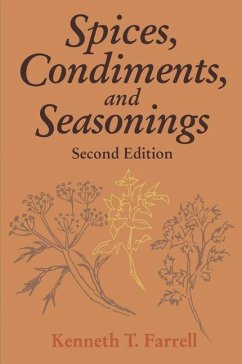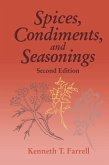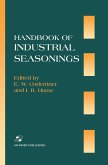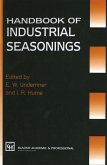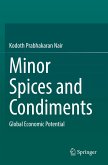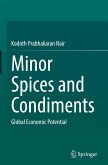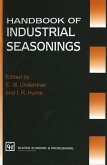Spices, Condiments, and Seasonings has been written for use as a text in food technology and as a general reference book for anyone associated with the food industry who has a desire to know more about these fabled, fragrant, pungent plant substances and how they are utilized in the formulation of condiments and seasonings. Dietitians concerned with low sodium diets will find the spice substitute information and the nutritional data on spices useful. Section I introduces the reader to the significance of spices through out history in a concise, chronological sequence of events. Section II defines spice and describes 58 of the more prominent spices and five popular spice blends. The description of each spice includes the following: common name, botanical name, family, histor icaVlegendary backgrounds, indigenous and cultivated sources of sup ply, physical and sensory characteristics, extractives obtained therefrom with their chemical and sensory attributes, specifications, proximate composition and nutritional data, and household and commercial uses. Photographs of each spice and sketches of each spice plant are included. Recipes for home cooking with spices and herbs have been omitted purposely as there are many good spice cookbooks available. Suggested spice substitutes for salt in sodium-restricted diets are listed together with the natural antioxidant activity of each spice. The microbiological aspects of spices are covered and the means for sterilizing them de scribed. The American Spice Trade Association's Standards for Spice Cleanliness are provided.
FROM THE CRITICS
Booknews -
The following information is given for 58 spices and herbs (from allspice to wormwood): common and Latin names, historical/legendary backgrounds, indigenous and cultivated sources of supply, physical and sensory attributes, extractives and their characteristics, household and commercial uses, proximate compositions, mineral content, natural antioxidant activity, and nutritional and microbiological data. Also covered: soluble spices, condiments and sauces, seasonings and seasoning technology. Popular interest in spices has grown (more people reducing sodium intake?) and the food industry has responded, as reflected in the substantial increase in data included in this second edition reference. Annotation c. Book News, Inc., Portland, OR (booknews.com)
Booknews -
The following information is given for 58 spices and herbs (from allspice to wormwood): common and Latin names, historical/legendary backgrounds, indigenous and cultivated sources of supply, physical and sensory attributes, extractives and their characteristics, household and commercial uses, proximate compositions, mineral content, natural antioxidant activity, and nutritional and microbiological data. Also covered: soluble spices, condiments and sauces, seasonings and seasoning technology. Popular interest in spices has grown (more people reducing sodium intake?) and the food industry has responded, as reflected in the substantial increase in data included in this second edition reference. Annotation c. Book News, Inc., Portland, OR (booknews.com)

